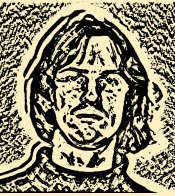Selected publications with abstracts
Here, abstracts and full texts of some of the published articles can be found.
You can also download my PhD thesis.
Near-field scanning optical microscopy studies
of thin film surfaces and interfaces
Petr Klapetek, Jiri Bursik
Applied Surface Science, 254 (3681-3684), 2008
Abstract:
In this article, the results of the modeling of topography related artifacts appearing in near-field scanning optical microscopy measurements are presented. The results obtained for near-field scanning optical microscope operation in reflection mode with off-axis far field detector position are compared with experimental results. It is shown that the chosen numerical method - Finite Difference in Time Domain method (FDTD) - can be used for efficient modeling of main topography related artifact. It is also seen that the far field detector position can have large influence on the resulting reflection mode optical images.
Download full article as PDF (1400 kB)
Near-field scanning optical microscope probe analysis
Petr Klapetek, Jiri Bursik, Miroslav Valtr, Jan Martinek
Ultramicroscopy, 108 (671-676), 2008
Abstract:
In this article results of a comparison of two NSOM probe characterization methods are presented. Scanning electron microscopy analysis combined with electromagnetic field modeling using the finite difference in time domain method are compared with measured far-field radiation diagrams of NSOM probes. It is shown that measurement of far-field radiation diagrams can be an efficient tool for daily checking of the NSOM probes quality. Moreover, it is shown that the inner probe geometry has large influence on the directional radiation of an NSOM probe and the far-field radiation diagram can be used as a simple method to distinguish between different probe geometries.
Download full article as PDF (500 kB)
Applications of the wavelet transform in AFM data analysis
Petr Klapetek, Ivan Ohlidal,
Acta Physica Slovaca, 3 (295-303), 2005
Abstract:
In this article the possibilities of the wavelet transform use within atomic force microscopy
data processing are presented. Both discrete and continuous wavelet transform is used for
different processing and analytical purposes including denoising, AFM scan error detection,
background removal and multifractal analysis. It is shown that the use of wavelet transform
can be very effective within AFM data analysis, namely for highly irregular data.
Download full article as PDF (240 kB)
Influence of the atomic force microscope tip on the multifractal
analysis of rough surfaces
Petr Klapetek, Ivan Ohlidal, Jindrich Bilek
Ultramicroscopy, 102 (51-59), 2004
Abstract:
In this paper, the influence of atomic force microscope tip on the multifractal analysis of rough surfaces is discussed.
This analysis is based on two methods, i.e. on the correlation function method and the wavelet transform modulus
maxima method. The principles of both methods are briefly described. Both methods are applied to simulated rough
surfaces (simulation is performed by the spectral synthesis method). It is shown that the finite dimensions of the
microscope tip misrepresent the values of the quantities expressing the multifractal analysis of rough surfaces within
both the methods. Thus, it was concretely shown that the influence of the finite dimensions of the microscope tip
changed mono-fractal properties of simulated rough surface to multifractal ones. Further, it is shown that a surface
reconstruction method developed for removing the negative influence of the microscope tip does not improve the results
obtained in a substantial way. The theoretical procedures concerning both the methods, i.e. the correlation function
method and the wavelet transform modulus maxima method, are illustrated for the multifractal analysis of randomly
rough gallium arsenide surfaces prepared by means of the thermal oxidation of smooth gallium arsenide surfaces and
subsequent dissolution of the oxide films.
Download full article as PDF (330 kB)
Theoretical analysis of the atomic force microscopy characterization of columnar thin films
Petr Klapetek, Ivan Ohlidal
Ultramicroscopy, 94 (19-29), 2003
Abstract:
In this paper the theoretical analysis of the influence of finite linear dimensions of an atomic force microscope tip on
profiles of the upper boundaries of columnar thin films and their statistical quantities is performed. This analysis is
based on a numerical evaluation of the main statistical quantities, i. e. the standard deviations of the heights and slopes,
one-dimensional distributions of the probability density of heights and slopes and power spectral density function, corresponding
to a simulated columnar structure of the thin films. It is shown that the strongest misrepresentation of the
measured profiles of the upper boundaries of the columnar films originates in the cases when the linear dimensions of the columns
are smaller or comparable with the linear dimensions of the tip. Further, it is shown that using a correcting procedure one
can correct (improve) the boundary profiles and their statistical quantities partially.
The results of this analysis enable us to perform
rough estimation of the errors achieved within atomic force microscopy studies of the real columnar thin films. Moreover, these results allow to estimate the corrections
of the statistical quantities mentioned above to be obtained using the correcting procedures.
Download full article as PDF (0.5 MB)
Analysis of the boundaries of ZrO2 and HfO2 thin films by atomic force microscopy and the combined optical method
Petr Klapetek, Ivan Ohlidal, Daniel Franta, Pavel Pokorny
Surface and Interface Analysis, 34 (559-564), 2002
Abstract:
In this paper an atomic force microscopy analysis of the microrough upper boundaries of ZrO2 and HfO2 thin films is presented. Within this analysis the values of the width, root-mean-square value of heights and power spectral density function of these boundaries are determined for ZrO2 and HfO2 exhibiting different thicknesses. The thickness dependences of the quantities mentioned are introduced. The values of the thicknesses of the films are evaluated using the combined optical method. This optical method is also used to describe boundary microroughness within the effective medium theory. A discussion of the results concerning the microroughness of the upper boundaries of both the ZrO2 and HfO2 thin films is also introduced.
Download full article as PDF (233 kB)
| 















